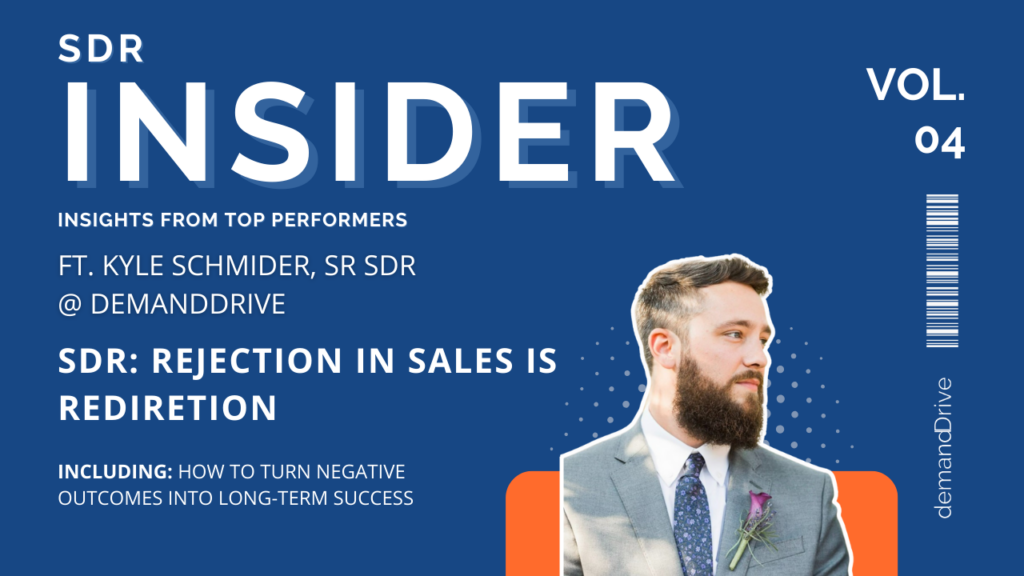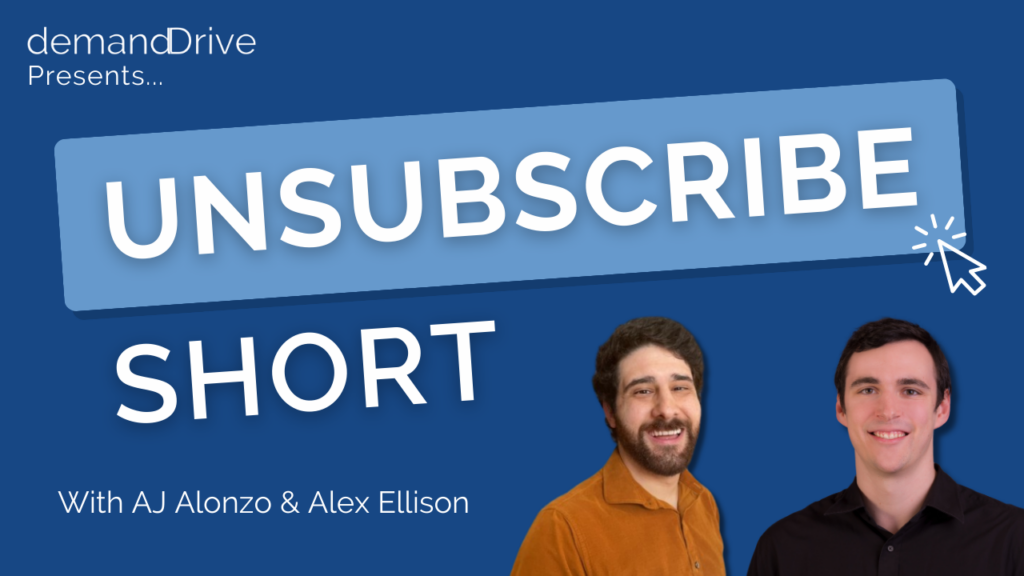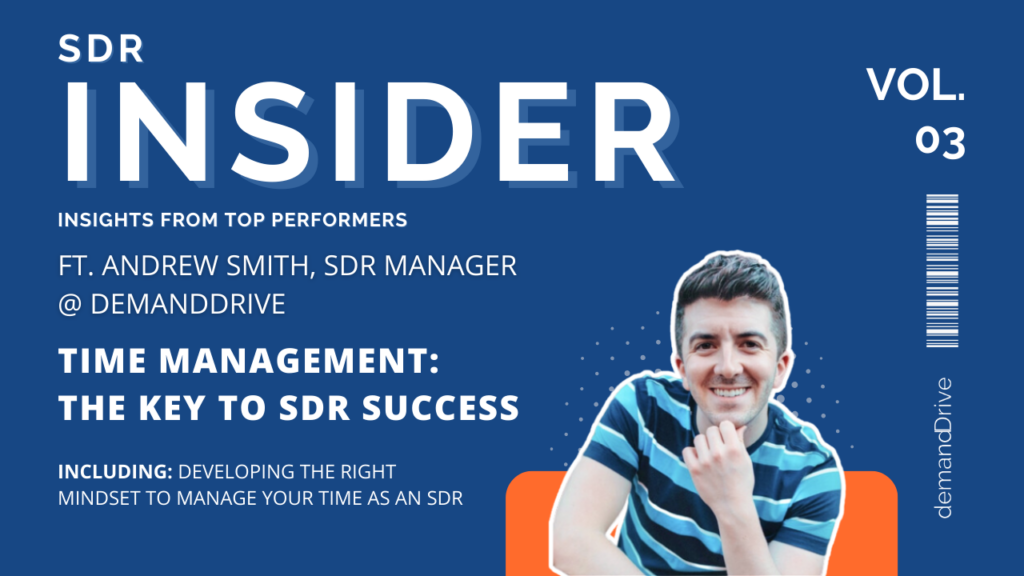Orchestrating the Perfect Cold Call
How Taylor Del Giudice, Co-Founder at Quack, is booking over 80% of his meetings via the phone with his ‘perfect’ cold calling framework.
Out Guest
Name: Taylor Del Giudice
What He Does: Taylor is the founding SDR at Certn, Co-Founder at Quack, and host of the SDR Handbook podcast.
How to Connect: Taylor’s LinkedIn
Think back to the absolute best cold call you’ve ever had. What made it great? What was missing that normally derails you? How was your tone? Your questions? Your close?
Ok, snap back to reality.
We know that not every cold call can be perfect. Sales, by nature, is unpredictable.
So when our guest, Taylor Del Giudice, told us that he had built the ‘perfect’ cold calling framework, we knew we had to get him on the show.
Beyond laying out his framework, Taylor dove into general outbound prospecting tactics that can serve any SDR team.
From getting over cold calling anxiety to curing commission breath to systematizing your qualification questions, Taylor has a ton of insight into how to make the phone a powerful tool in your outbound arsenal.
And the proof is in the pudding – over 80% of the meetings he books come via the phone.
Find out how he does it – and how you can emulate his framework & style to see similar results yourself.
Key Takeaways
-
I don’t want to bury the lead – talk us through the “perfect cold call.” How did you develop this idea?
-
Cold calling is, by nature, unpredictable. How do you pivot your process when things go off the rails? How do you ensure that things stay on the rails for as long as possible?
-
Cold calling is a valuable channel, but it’s not the only channel. How do you incorporate other channels into your outreach?
-
What are most people not doing that they should?
-
You have your own newsletter and podcast. Why did you decide to build those as an SDR? What value do you think it brings you?
Top 3 Takeaways
⭐ So what does the ‘perfect’ cold call look like? Taylor follows a (fairly) specific process for each of his calls:
-
Start with a normal opener – no need to get fancy.
-
Seek out permission. Pivot that to explain why he’s calling.
-
Provide context, and ask a question. The goal here is to identify a pain or need.
-
If there is a pain, pitch the solution. Follow that up with another question.
-
Pitch again based on the response.
-
Pitch a meeting.
Obviously, this is the “perfect” scenario, but there are a few lessons within perfection that serve as core requirements for all of his cold calls:
-
Asking for permission. You want to cede a little power (not all of it), otherwise, the conversation will be incredibly one-sided.
-
Never pitch without knowing a pain. There’s no point. It’s easy to get a “not interested” if you start pitching something someone doesn’t need.
-
That means no strong-arming. If there’s no pain that you can uncover or illuminate, don’t bother asking for a meeting. It’s not a good use of anyone’s time.
===
🗺️ “I believe that…the best salesmen don’t sell. They just help you understand what is the best situation for you. And that comes with making sure that you’re understanding their pains and solving their pains instead of just throwing random stuff at them.”
Guiding is in, and hard-selling is out. SDRs shouldn’t be throwing spaghetti at the wall here, they should be looking for a pain / challenge OR illuminating a pain / challenge they can help with.
We used to say that being a consultative SDR was a differentiator. Now, it’s the norm.
===
🐸 “And so every morning from 8 o’clock till 9 o’clock, I would do something that I call, well not I call, but it’s a concept called ‘eat the frog’, which is just doing the thing you hate most in the morning.”
Another podcast about cold calling, and another guest who practices the ‘eat the frog’ tactic.
Like Alan Weiss said: “Once An Accident, Twice A Coincidence, Three Times A Pattern”
If you want to make the phone an integral part of your outbound strategy (and you should), you have to get over the fear and uncertainty associated with cold calling.
Eating the frog is one of the best tactics to do just that.
🎙️ Listen to Charlotte Lloyd and Christian Erba talk about eating the frog in their episodes.
Our Favorites
😝 “I think the industry average is almost like 1/100 dials you should book one meeting. That’s a lot of dials to book one meeting. And so, when you get that person that could convert, obviously, if you have quota in two days that you need to get because you’ve missed quota three months of the past six…you’re not going to be thinking, ‘oh, I should be taking a consultative approach.’
Commission breath stinks. But it’s unfortunately very common in the SDR role – especially if your organization doesn’t do a great job at balancing the short-term wins and long-term growth.
Yes, SDRs have a quota they need to hit – but are you ok with them burning their chance at long-term pipeline development for a chance to hit near-term quota?
Effectively balancing these short-term and long-term goals starts at the top with better forecasting and capacity planning. But Taylor brings up a tactic that anyone can implement to help “cure” some of their commission breath:
“I believe fully that you should be working from the 15th to the 15th of a month, not from the 30th to the 30th. So if you build that up and you snowball that, you end up hitting quota halfway through the month, and then that way you don’t have commission breath. That’s one way of getting rid of it.”
What do you think? Should reps think about shifting their mindset to work like this, or are we too married to the idea of full month quota goals?
===
🔥 “There’s just no point doing a half-personalized email because no one’s going to notice it. It’s basically an automated email at that point.”
Hot take by Taylor here. And we both agree and disagree with what he’s saying.
You never want to go half-measure, but you also don’t want to just dump people into an automated email cadence.

Account tiering can help tremendously here.
If you’re reaching out to Tier 1 accounts, everything should be relevant and personalized. Deliver the most effort to the accounts that will move the needle the most.
For Tier 2 accounts, you can get away with a templated follow-up – as long as the template is still relevant to that persona. It’s easy enough to take a foundational message and tweak a portion of it to speak to specific personas. That way it’s “automated” but still compelling.
For Tier 3 accounts, you can get away with basic automated emails. In fact, you can probably run just automated cadences until you get a hand-raiser or see spikes in engagement.
🎙️ We detailed that account tiering process in an older episode of Opt In.
Final Thoughts
Hey there! AJ here 👋
I love it when someone makes a claim like “80+% of my meetings come via the phone” and they can actually back it up with data & anecdotal evidence.
Not saying that I was skeptical of Taylor’s claim, but I’ve seen a lot of “snake oil” type tactics during my time in B2B sales.
Taylor stands out because not only does his framework work for him, it works for the reps that he coaches/manages as well. And after hearing him detail the testing process associated with building the script, it’s easy to see why. It was extensive and dynamic – two things that are often missing in most processes.
Now I’m not saying that if you adopt Taylor’s framework you’ll automatically start booking more meetings on the phone. There are no silver bullets in sales.
What I am saying is that if you put in the same amount of time and effort as he did into building a framework & process around cold calling, you will see better results. And thankfully, he gave us the broad strokes of his system so you don’t have to start from scratch.
Other Episodes
Ep. 4 • 31 min.
Ep. 2 • 11 min.
Ep. 3 • 48 min.




